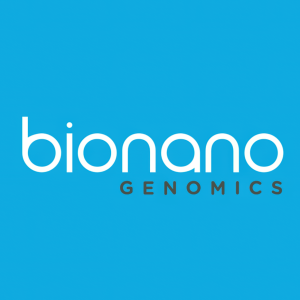American College of Medical Genetics and Genomics Includes OGM in Latest Edition of Technical Laboratory Standards for Solid Tumor Analysis
SAN DIEGO, Feb. 22, 2024 (GLOBE NEWSWIRE) -- Bionano Genomics, Inc. (Nasdaq: BNGO), today announced that optical genome mapping (OGM) was included for the first time in the American College of Medical Genetics and Genomics (ACMG) technical laboratory standards documentation for solid tumor analysis. The section, which was last updated in 2016, includes an overview of current cytogenomic techniques for solid tumor analysis and guidelines for their use, providing structure and standardization to laboratory geneticists as they perform cytogenomic studies for solid tumors.
The technical laboratory standards were developed by a working group of laboratory geneticists performing cytogenetic studies. The working group conducted a comprehensive review of publications, current guidelines from organizations including ACMG, National Comprehensive Cancer Network, Children’s Oncology Group, and the World Health Organization (WHO), as well as the authors’ own expertise and empirical data, and their recommendations were voted on by the ACMG general membership and approved by the organization’s laboratory quality assurance committee and board of directors. The authors describe OGM’s utility for genome-wide analysis, due to its ability to detect and validate structural variants (SVs) at high resolution in a single assay, as compared to traditional cytogenetic methods.
“We are thrilled to see OGM included in the newest section of the ACMG technical laboratory standards for solid tumor studies, which provides a standardized guide for laboratory geneticists who are conducting this cytogenomic analysis. ACMG’s laboratory standards documentation plays an important role in directing the cancer laboratory community toward emerging techniques, and in comparing different methods of genome analysis,” commented Alka Chaubey, PhD, FACMG, chief medical officer of Bionano.
“Inclusion in the ACMG lab standards for solid tumor analysis is a significant milestone for OGM and for people in the field of cancer cytogenomics who are looking for ways to move the community forward. We were pleased to see the authors note OGM’s ability to detect relevant variants that other methods, including sequencing, may miss, while citing OGM’s efficient and sensitive analysis. We believe that cytogenomic analysis of solid tumor samples is critically important for clinical research,” added Erik Holmlin, PhD, president and chief executive officer of Bionano.
The publication can be found here.
About Bionano
Bionano is a provider of genome analysis solutions that can enable researchers and clinicians to reveal answers to challenging questions in biology and medicine. The Company’s mission is to transform the way the world sees the genome through OGM solutions, diagnostic services and software. The Company offers OGM solutions for applications across basic, translational and clinical research. Through its Lineagen, Inc. d/b/a Bionano Laboratories business, the Company also provides diagnostic testing for patients with clinical presentations consistent with autism spectrum disorder and other neurodevelopmental disabilities. The Company also offers an industry-leading, platform-agnostic software solution, which integrates next-generation sequencing and microarray data designed to provide analysis, visualization, interpretation and reporting of copy number variants, single-nucleotide variants and absence of heterozygosity across the genome in one consolidated view. The Company additionally offers nucleic acid extraction and purification solutions using proprietary isotachophoresis technology. For more information, visit www.bionano.com, www.bionanolaboratories.com or www.purigenbio.com.
Unless specifically noted otherwise, Bionano’s OGM products are for research use only and not for use in diagnostic procedures.
Forward-Looking Statements of Bionano
This press release contains forward-looking statements contains forward-looking statements within the meaning of the Private Securities Litigation Reform Act of 1995. Words such as “believe,” “may,” “potential” and similar expressions (as well as other words or expressions referencing future events, conditions or circumstances and the negatives thereof) convey uncertainty of future events or outcomes and are intended to identify these forward-looking statements. Forward-looking statements include statements regarding our intentions, beliefs, projections, outlook, analyses or current expectations concerning, among other things: t OGM’s ability to detect and validate SVs at high resolution in a single assay, as compared to traditional cytogenetic methods; the impact that the inclusion of OGM in the ACMG standards documentation may have on our business or our opportunities; the ability and utility of OGM to detect relevant SVs in solid tumor samples; the ability and utility of OGM to detect relevant variants that other methods, including sequencing, may miss, and OGM’s efficient and sensitive analysis; and other statements that are not historical facts.
Each of these forward-looking statements involves risks and uncertainties. Actual results or developments may differ materially from those projected or implied in these forward-looking statements. Factors that may cause such a difference include the risks and uncertainties associated with: the impact of geopolitical and macroeconomic developments, such as recent and future bank failures, the ongoing Ukraine-Russia conflict, related sanctions, the Israel-Hamas war, and any global pandemics, on our business and the global economy; challenges inherent in developing, manufacturing and commercializing products; our ability to further deploy new products and applications and expand the markets for our technology platforms; failure of OGM to detect and validate SVs at high resolution in a single assay, as compared to traditional cytogenetic methods; failure of the inclusion of OGM in the ACMG standards documentation to have an impact on our business or our opportunities; failure of OGM to detect relevant SVs in solid tumor samples; failure of OGM to be included in other standards documentation; failure of OGM to detect relevant variants that other methods, including sequencing, may miss; and failure of OGM to provide efficient and sensitive analysis; future standards that contradict or do not support the inclusion of OGM in laboratory standards; our expectations and beliefs regarding future growth of the business and the markets in which we operate; changes in our strategic and commercial plans; our ability to obtain sufficient financing to fund our strategic plans and commercialization efforts and our ability to continue as a “going concern”; and including the risks and uncertainties described in our filings with the Securities and Exchange Commission, including, without limitation, our Annual Report on Form 10-K for the year ended December 31, 2022 and in other filings subsequently made by us with the Securities and Exchange Commission. All forward-looking statements contained in this press release speak only as of the date on which they were made and are based on management’s assumptions and estimates as of such date. We are under no duty to update any of these forward-looking statements after the date they are made to conform these statements to actual results or revised expectations, except as required by law. You should, therefore, not rely on these forward-looking statements as representing our views as of any date subsequent to the date the statements are made. Moreover, except as required by law, neither we nor any other person assumes responsibility for the accuracy and completeness of the forward-looking statements contained in this press release.
CONTACTS
Company Contact:
Erik Holmlin, CEO
Bionano Genomics, Inc.
+1 (858) 888-7610
eholmlin@bionano.com
Investor Relations:
David Holmes
Gilmartin Group
+1 (858) 888-7625
IR@bionano.com









